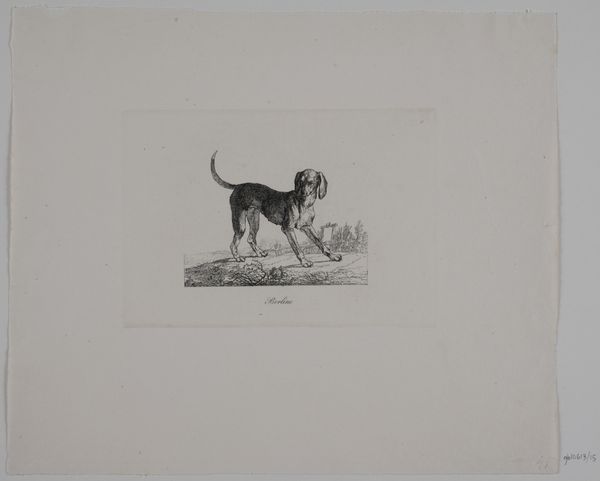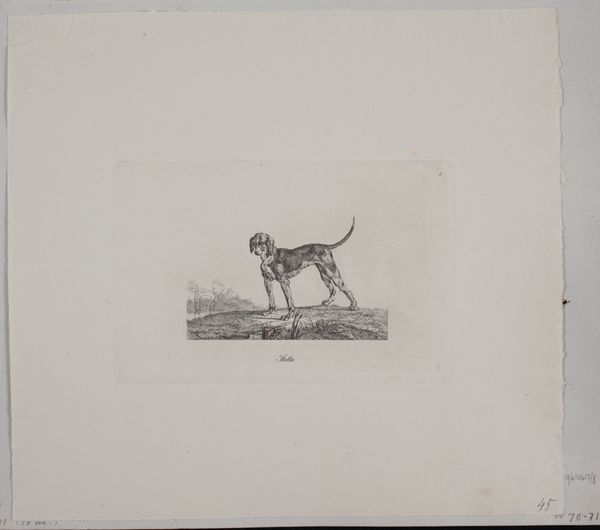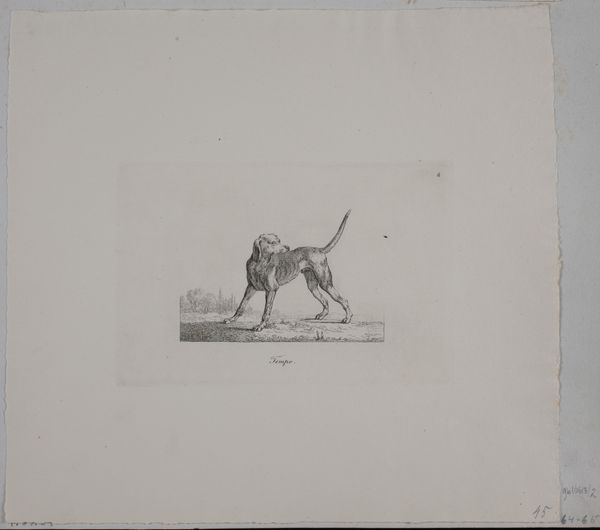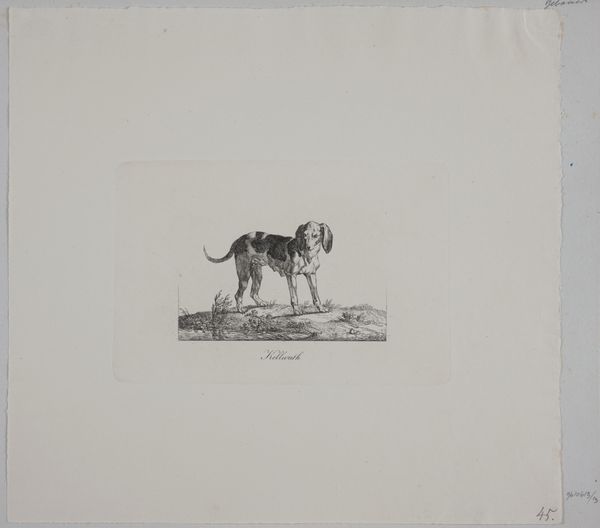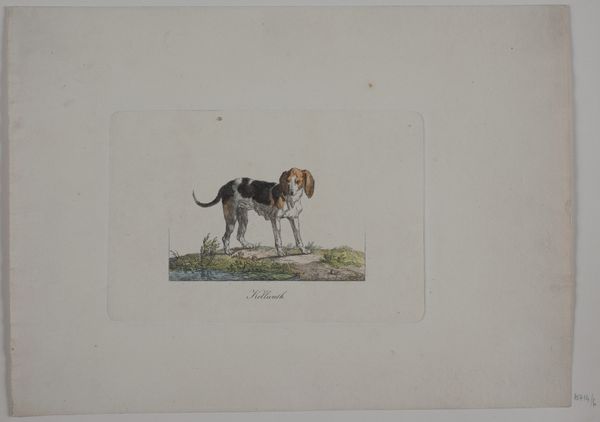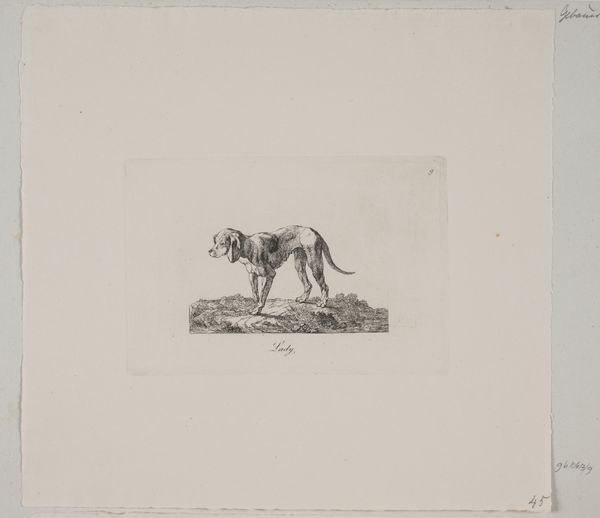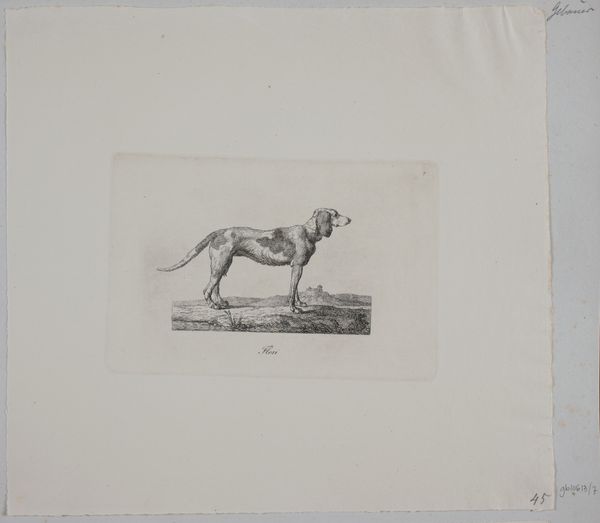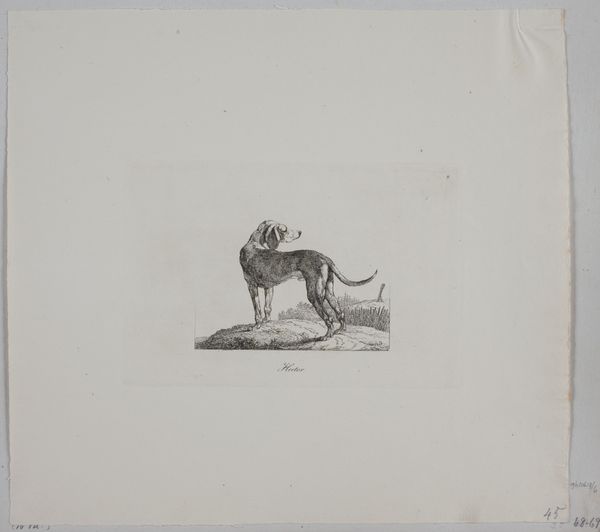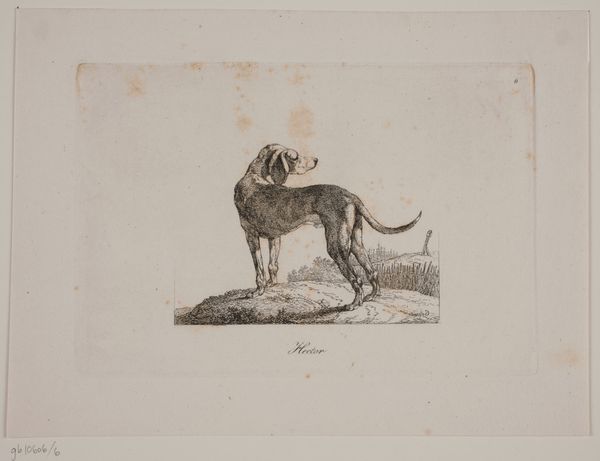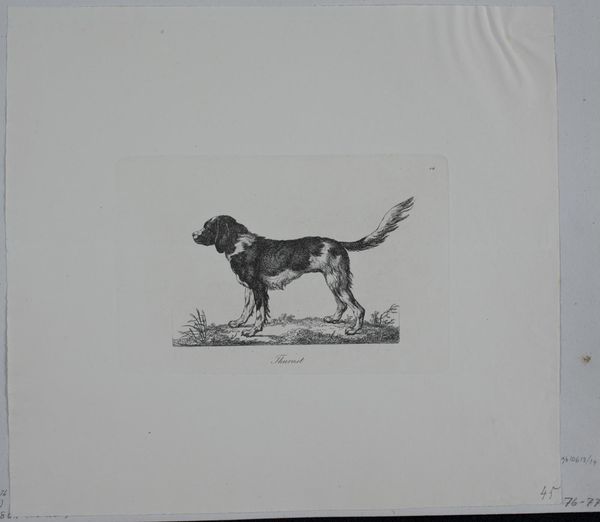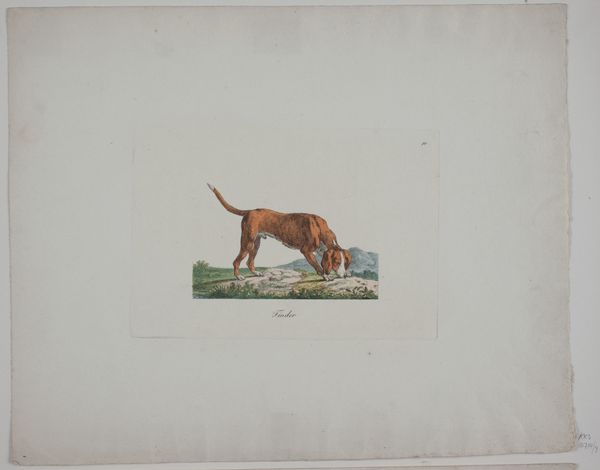
drawing, print, engraving
#
drawing
# print
#
engraving
#
realism
Dimensions: 110 mm (height) x 162 mm (width) (plademaal)
Curator: My initial impression is one of simple, stark beauty. The tonal gradations achieved with such precision are quite striking. Editor: Here we have Christian David Gebauer's "Wekop," created in 1821. It’s an engraving, so technically a print, though its origins certainly lie in drawing. The artwork is held at the SMK, the Statens Museum for Kunst. Curator: The title "Wekop" sits delicately below the image of the hound, but tell me, is "Wekop" simply the hound’s name, or does it hold some cultural meaning in Gebauer’s Denmark? The dog seems isolated, almost staged, on a deliberately small mound. The rest is unadorned negative space. Editor: As for the significance of "Wekop," a definitive historical connection to the artwork remains unclear. It is certainly possible that the work depicts a well-known or favourite animal companion of someone in Gebauer's social circles, giving this realism a dimension of pet portraiture. What intrigues me about the emptiness of the page around the hound is how that highlights, to the modern viewer, how much aristocratic or bourgeois society depended on animals. Curator: Precisely! Consider the lean musculature meticulously rendered through the engraver's art; it signifies both a working animal and a display of careful attention, a cultural marker. There's something so revealing about how we depict animals, and that's very true of this work, as you suggest. The artist paid great attention to texture. I can almost feel the roughness of its coat. Editor: Yes, dogs appear frequently in artworks commissioned by those in power. Often they symbolized loyalty or nobility – though, without specific provenances, pinning down those themes proves difficult here. This work captures how deeply entwined dogs, like Wekop here, have become in our society through breeding, domestication, and social symbolism. Curator: On the other hand, perhaps Gebauer was not attempting to elevate but, rather, record. The clinical observation in this piece pulls us back to a detailed assessment of its structure. I appreciate how it straddles both scientific observation and artistic rendering, though one always sees elements like composition playing roles here. Editor: Indeed. So what began as a stark, beautiful simplicity reveals the complexity of our relationship with the natural world. And with the history embedded in artistic practices. Curator: A fitting summary!
Comments
No comments
Be the first to comment and join the conversation on the ultimate creative platform.
